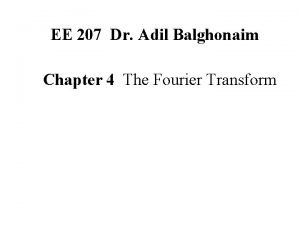MUSI 207 Japan Chapter 5 The Music of








- Slides: 8

MUSI 207 Japan Chapter 5

The Music of Japan Update: Chapter Presentation Self Reflection (bonus) Different Cultural Values Musical/Theatrical Genres and Social Values Gender Issues

Different Cultural Values In Japan, maintaining tradition is important. In pedagogy and performance, the emphasis is on playing music traditionally, without innovation. Preservation has tended to take a vertical path in Japan. For example, genres are transmitted from teacher to student through special lineages, without there being any apparent horizontal influence from co-existing genres.

Musical/theatrical Genres and Social Values Musical/theatrical genres tell us about Japanese history and social values. Genres are linked to social class and historical epochs. For example, gagaku remains a symbol of the authority of the Imperial court while noh, the art of the samurai, emphasizes simplicity and personal enlightenment through selfunderstanding and self-reliance. Kabuki and bunraku illustrate the fondness of the townsfolk for theater.

Gender Issues The koto is believed to originally have been a court musical instrument played by men; the shamisen was originally an instrument played by banished samurai who became wandering Buddhist monks who utilized the shakuhachi as a weapon when needed. The shamisen was played by men in accompaniment to the various theater genres. However, women have come to play these instruments during the Edo period in sankyoku, an ensemble music that has been associated with the geisha.

Gender Issues cont. The term geisha literally means “arts person, ” whereby most Westerners mistakenly think the term refers to prostitutes. Japanese women had been trained in the arts at one time to entertain gentlemen, yet today they are trained for arts recitals. In kabuki, women were banned as performers in 1629 due to the genre becoming associated with prostitution. In 1653, reforms were again made in kabuki, restricting young men as performers as well.

For next class Chapter Exam 5 is due Friday Comment on the D 2 L Power. Point presentation Read Chapter 5 (150 -161) on Japanese music

Music in the soul can be heard by the universe. -Lao Tzu















